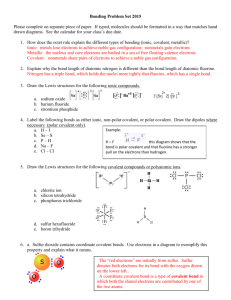#16 What is a Chemical Bond? Aplus Guided Notes Objectives
advertisement
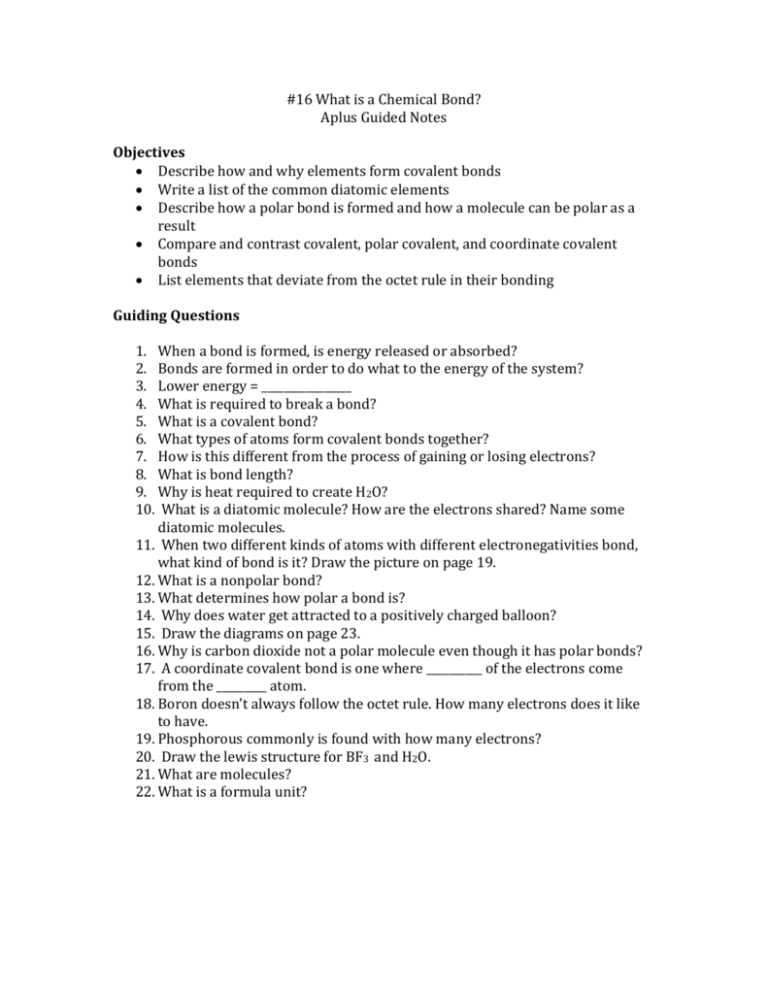
#16 What is a Chemical Bond? Aplus Guided Notes Objectives Describe how and why elements form covalent bonds Write a list of the common diatomic elements Describe how a polar bond is formed and how a molecule can be polar as a result Compare and contrast covalent, polar covalent, and coordinate covalent bonds List elements that deviate from the octet rule in their bonding Guiding Questions 1. When a bond is formed, is energy released or absorbed? 2. Bonds are formed in order to do what to the energy of the system? 3. Lower energy = ________________ 4. What is required to break a bond? 5. What is a covalent bond? 6. What types of atoms form covalent bonds together? 7. How is this different from the process of gaining or losing electrons? 8. What is bond length? 9. Why is heat required to create H2O? 10. What is a diatomic molecule? How are the electrons shared? Name some diatomic molecules. 11. When two different kinds of atoms with different electronegativities bond, what kind of bond is it? Draw the picture on page 19. 12. What is a nonpolar bond? 13. What determines how polar a bond is? 14. Why does water get attracted to a positively charged balloon? 15. Draw the diagrams on page 23. 16. Why is carbon dioxide not a polar molecule even though it has polar bonds? 17. A coordinate covalent bond is one where __________ of the electrons come from the _________ atom. 18. Boron doesn’t always follow the octet rule. How many electrons does it like to have. 19. Phosphorous commonly is found with how many electrons? 20. Draw the lewis structure for BF3 and H2O. 21. What are molecules? 22. What is a formula unit?


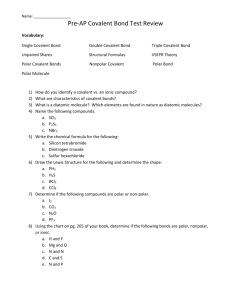
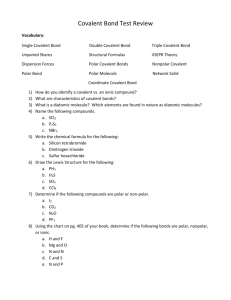
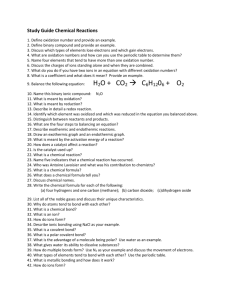

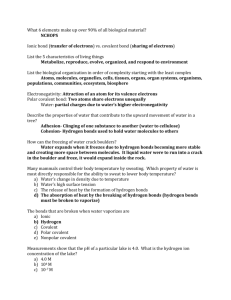
![QUIZ 2: Week of 09.03.12 Name: [7pts] 1.) Thoughtful list of 3](http://s3.studylib.net/store/data/006619037_1-3340fd6e4f1f4575c6d8cf5f79f0ff3e-300x300.png)



